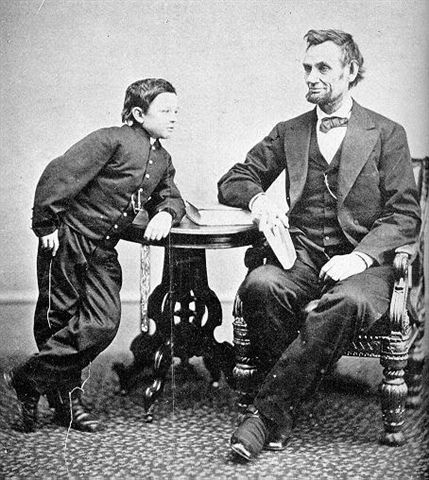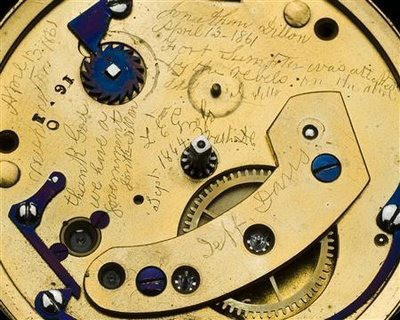
The secret inscription on Abraham Lincoln's pocket watch
Share
Historical Clocks: Abraham Lincoln's Pocket Watch
“Secret inscription” on Abraham Lincoln’s personal pocket watch discovered and revealed after 148 years
Washington, March 10, 2009 – The Smithsonian Institution’s National Museum of American History announced that it has found a “secret” message in President Abraham Lincoln’s watch.
This was engraved by a watchmaker who was repairing it in 1861 when news of the attack on Fort Sumter reached Washington, DC.
In an interview with the New York Times on April 30, 1906, 84-year-old Jonathan Dillon recalled working for MW Galt and Co. on Pennsylvania Avenue in Washington, where he repaired Lincoln's clock.
The shopkeeper announced that the first shot of the civil war had been fired.
Dillon reported that he removed the clock face and wrote on the metal underneath with a sharp object: "The first shot has been fired. Slavery is dead. Thank God we have a president who at least tries."
He then signed and dated the inscription and closed the dial.
Dillon told the New York Times in 1906 that, to his knowledge, no one had ever seen the inscription. Hidden inscription on Abraham Lincoln's watch.
After contacting Dillon's great-great-grandson, Doug Stiles of Waukegan, Illinois, the museum agreed to remove the clock face to see if it contained the clockmaker's message.
The museum actually found an engraved message on the brass base of the clockwork.
The wording differed slightly from Dillon's own recollection.
The engraving reads:
Jonathan Dillon April 13, 1861 Fort Sumpter was attacked by the rebels on the above date.
Jonathan Dillon April 13, 1861 Washington Thank God we have a government. Jonathan Dillon
Further markings from one or more watchmakers can be seen on the watch.
“Lincoln never knew about the message he carried in his pocket,” said Brent D. Glass, director of the National Museum of American History.
“It’s a personal story when an ordinary watchmaker is inspired to capture something for posterity.”
In the 18th and 19th centuries, professional watchmakers often recorded their work inside a watch, which was usually only seen by one other watchmaker.
This inscription remained hidden behind the dial for almost 150 years. Lincoln is said to have acquired the clock in the 1850s from George Chatterton, a jeweler from Springfield, Illinois.
Although Lincoln was not outwardly vain, the fine gold watch was a symbol of his success as a prominent lawyer in Illinois.
In the 19th century, men carried their watches in their trouser pockets. It was only after the First World War that wristwatches became increasingly popular among men.
The clock came to the museum in 1958 as a gift from Lincoln Isham, Abraham Lincoln's great-grandson.
Lincoln was elected the 16th President of the United States in November 1860.
In January 1861, South Carolina seceded from the Union, followed by the secession of six other states before Lincoln's inauguration in March 1861.
On April 12, 1861, the Civil War began with shots fired at Fort Sumpter


Source: pocketwatchrepair.com

